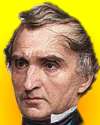
On 18 Apr 1873, Justus von Liebig died. Some readers may recall his name attached to the Liebig Condenser used in a distillation apparatus, but may otherwise be unaware of the many contributions this German chemist made in diverse fields.
He was also a great communicator for science to the public. The book of his first series of Familiar Letters on Chemistry met with rapid sales, going through two editions in England, a reprinting in America, and a translation into Italian.
From his follow-up second series, you can read an example of his popular writing on this chapter on the Nature of Decay. You may be startled to learn of the outcome of the discovery of the nature of decay of human remains at the Cemetery of the Innocents at Paris. But Liebig’s application of chemistry to the manufacture of beer and wine will be of more conventional interest.

On 18 Apr 1873, the German chemist Justus von Liebig died. He was not only a founding father of organic chemistry, but is notable as an influential teacher. He transformed scientific education, medical practice and agriculture. Today's book pick is: Justus von Liebig: The Chemical Gatekeeper (Cambridge Science Biographies), by William H. Brock, who provides a definitive biography of one of the most important figures in the history of chemistry. Chapters on farming, food chemistry, and the chemistry of sewage reveal a now little-known side of this remarkable researcher who understood the civic importance of his science in the modern world.
It is available from Amazon, typically about New from $54.33. Used from $61.39. (As of earlier time of writing - subject to change.)
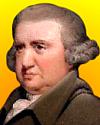 | So the horns of the stag are sharp to offend his adversary, but are branched for the purpose of parrying or receiving the thrusts of horns similar to his own, and have therefore been formed for the purpose of combating other stags for the exclusive possession of the females; who are observed, like the ladies in the times of chivalry, to attend to the car of the victor... The final cause of this contest amongst the males seems to be, that the strongest and most active animal should propagate the species, which should thence become improved. |
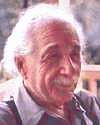 | I have little patience with scientists who take a board of wood, look for its thinnest part and drill a great number of holes where drilling is easy. |
 | A time will come, when fields will be manured with a solution of glass (silicate of potash), with the ashes of burnt straw, and with the salts of phosphoric acid, prepared in chemical manufactories, exactly as at present medicines are given for fever and goitre. |
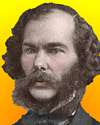 | Science is the systematic classification of experience. |
| Before you look at today's web page, see if you can answer some of these questions about the events that happened on this day. Some of the names are very familiar. Others will likely stump you. Tickle your curiosity with these questions, then check your answers on today's web page. | |
| Births | |
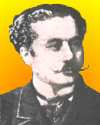 | Paul-Émile Lecoq de Boisbaudran, born 18 Apr 1838, was a French chemist who used spectroscopy to search minerals for new elements. The elements he found include samarium (1880), and dysprosium (1886). Another was the eka-aluminium predicted by Mendeleev between aluminium and indium. Boisbaudran named this new element in honour of France. What is the name Boisbaudran gave to eka-aluminium? |
| Deaths | |
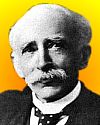 | Sir John Ambrose Fleming (1849-1945) was an English engineer who made numerous contributions to electronics. In 1904, he built an evacuated glass tube with a heated filament (cathode) and another electrode (anode). When the anode was positively biased, he discovered a one-way current as the electrons flowed only from filament to anode. What name did Fleming give this device? |
 | Albert Einstein, who died on 18 Apr 1955, was a German-American physicist who developed the special and general theories of relativity. Yet the Nobel Prize for Physics he was awarded in 1921 was for his earlier explanation of something quite different. For the explanation of what phenomenon was Eistein's Nobel Prize awarded? |
 | Erasmus Darwin, who died on 18 Apr 1802, was a prominent English physician, poet, philosopher, and naturalist. He formulated one of the first formal theories on evolution, with ideas about how competition and sexual selection could cause changes in species. Though Erasmus Darwin did not come up with the concept of natural selection, that approach came from Charles Darwin, a member of his family. What family relationship did Erasmus Darwin have to Charles Darwin? |
| Events | |
 | On 18 Apr 1950, an aircraft made a flight from Toronto, Canada, to New York City, which was the first of its kind for an international passenger flight. What about this aircraft made it the first of its kind for an international passenger flight? |
Fast answers for the previous newsletter for April 17: seas or maria • Love waves - a major type of earthquake waves propagated between the crust and underlying mantle • Benjamin Franklin • Surveyor 7 • the decade including the year 1964.
 If you enjoy this newsletter, the website, or wish to offer encouragement or ideas, please send feedback by using your mail reader Reply button.
If you enjoy this newsletter, the website, or wish to offer encouragement or ideas, please send feedback by using your mail reader Reply button. Your click on a Facebook, StumbleUpon, or other social button on the site webpages is also a welcome sign of appreciation. Thank you for using them.
© This newsletter is copyright 2020 by todayinsci.com. Please respect the Webmaster's wishes and do not put copies online of the Newsletter — or any Today in Science History webpage. (If you already have done so, please remove them. Thank you.) Offline use in education is encouraged such as a printout on a bulletin board, or projected for classroom viewing. Online, descriptive links to our pages are welcomed, as these will provide a reader with the most recent revisions, additions and/or corrections of a webpage. For any other copyright questions, please contact the Webmaster by using your mail reader Reply button.
--
If you do not want to receive any more newsletters, Unsubscribe
To update your preferences and to unsubscribe visit this link
Executive Real Estate Business Class
-
"It was like a man with wings. It wasn't like anything you'd see on TV or in a monster movie." ...
About the publisher
Search This Blog
Blog Archive
-
▼
2020
(1542)
-
▼
April
(134)
- ANIMALS: The rush to get a dog
- On This Day for April 30 - George Washington inaug...
- Medical Association Confirms Hydroxychloroquine 90...
- Newsletter for Thursday 30 April.
- April 30: Hitler Commits Suicide but What Happened...
- SCIENCE: The Spinosaurus is scarier than we thought
- Demystified: What’s the Difference Between a Bee a...
- On This Day for April 29 - British royal wedding, ...
- Breaking News and Historians in the News from HNN
- Is this Global Infection-induced Stealth Euthanasi...
- Newsletter for Wednesday 29 April.
- April 29: The Fall of Saigon and the Master of Fak...
- Family: 12 ideas to keep kids busy this week
- TRAVEL: Seeing from afar—the best photography books
- On This Day for April 28 - Benito Mussolini execut...
- Where did those 1600 Nazi Doctors go that were bro...
- Where did those 1600 Nazi Doctors go that were bro...
- Newsletter for Tuesday 28 April.
- April 28: James Cook Lands at Botany Bay, Mutiny o...
- HISTORY: Battling a pandemic so women could vote
- On This Day for April 27 - Independence for Sierra...
- New Op Eds This Week on History News Network
- NY Policy Results in Widespread Nursing Home Elder...
- Newsletter for Monday 27 April.
- April 27: Spanish Settle in the Philippines, Labor...
- SPECIAL: Family guide: Keeping your kids moving!
- The Last Kingdom | Historical quiz questions | Rom...
- On This Day for April 26 - Chernobyl nuclear accid...
- Data tells a drastically different story than what...
- Newsletter for Sunday 26 April.
- April 26: The Great Debate, Chernobyl and Oscar Wi...
- On This Day for April 25 - Hubble Space Telescope ...
- Save your life by using a mask correctly - Can pro...
- Newsletter for Saturday 25 April.
- CORONAVIRUS SPECIAL EDITION: What you need to know...
- April 25: The Guillotine, DNA and the 1st Solar Ba...
- PHOTOGRAPHY: Honoring those who help us every day
- How A Devastating Plague May Have Hastened The Dem...
- On This Day for April 24 - Installation of Pope Be...
- This Week's Roundup Top Ten from History News Network
- Newsletter for Friday 24 April.
- COVID 19 Research, the Nuremberg Code for research...
- April 24: War! What is it Good For?
- YOUR WEEKLY ESCAPE: The secrets hidden in a 500-ye...
- Truth Needs a Champion. Is It You?
- ANIMALS: More cats with the coronavirus. Should I ...
- On This Day for April 23 - Voting for Eritrea's in...
- Newsletter for Thursday 23 April.
- April 23: Defeat of the Vikings, Robert E. Lee and...
- SCIENCE: Beyond Greta: Who’s fighting for the Eart...
- Earth Day Special Edition: Today, let the planet i...
- Demystified Video: What's Inside the Great Pyramid?
- On This Day for April 22 - First Earth Day, Miguel...
- Breaking News from History News Network
- What do you think so far?
- Newsletter for Wednesday 22 April.
- April 22: Portugal Claims Brazil, Barbara Walters ...
- TRAVEL: Marooned at sea, 95,000 people
- On This Day for April 21 - French elections held, ...
- Newsletter for Tuesday 21 April.
- Your support empowers our scientists, explorers an...
- April 21: Babur Establishes the Mughal Empire, Tir...
- The step-by-step plan we are experiencing is expla...
- HISTORY: When George Washington was an epidemic fi...
- On This Day for April 20 - Explosion on the Deepwa...
- This Week's New Op-Eds on History News Network
- Corrected Link: Globalist Plan Rolling Out now cre...
- Globalist Plan Rolling Out now creating global pol...
- Newsletter for Monday 20 April.
- April 20: Pasteurization, Marie Curie Isolates Rad...
- SPECIAL: Coronavirus family guide: 'Back' to school
- VE Day at 75 | The scandalous lives of the Byrons
- On This Day for April 19 - American Revolution beg...
- Newsletter for Sunday 19 April.
- April 19: The 'Shot Heard Round the World' and How...
- Family: It's almost Earth Day! Create your own saf...
- The Compass: Earth Day 50th anniversary edition
- On This Day for April 18 - The midnight ride of Pa...
- Major Media (Fox included) Lies for the Deep State...
- Newsletter for Saturday 18 April.
- Our award-winning storytelling goes further.
- April 18: The 'Regulars are Coming!' and the Life ...
- CORONAVIRUS SPECIAL EDITION: People are having biz...
- PHOTOGRAPHY: On the ground in Nairobi as COVID-19 ...
- On This Day for April 17 - Canada Act proclaimed, ...
- The Roundup Top Ten from History News Network!
- Newsletter for Friday 17 April.
- April 17: The Bay of Pigs Invasion and the Boxing ...
- YOUR WEEKLY ESCAPE: Majestic photos of the tallest...
- Free Download: Britannica's Chrome Extension
- ANIMALS: The quarantine lifeline of a dog (or cat)
- On This Day for April 16 - Harriet Quimby's flight...
- Newsletter for Thursday 16 April.
- April 16: Madame Tussaud's Bloody Background
- SCIENCE: Ways to see what the world could be
- Discover Ancient Sparta with National Geographic H...
- Demystified: Can Eating Too Many Carrots Make Your...
- On This Day for April 15 - Sinking of the Titanic,...
- Breaking News from HNN
- Newsletter for Wednesday 15 April.
-
▼
April
(134)
-
Blogroll
-
About
HistoryFact










0 comments:
Post a Comment